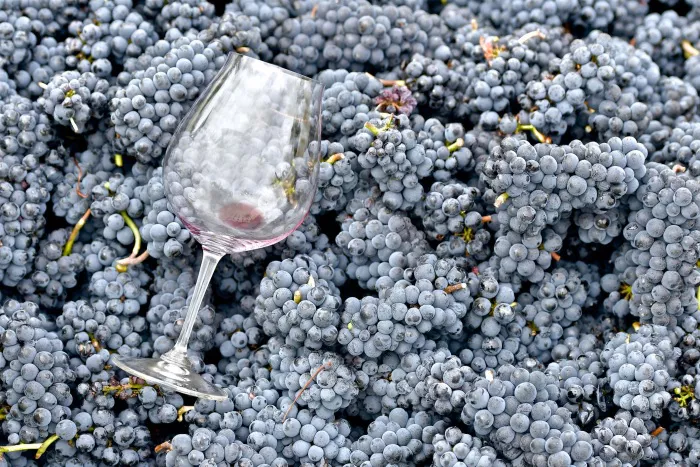Wine enthusiasts often find themselves navigating a world of wine varietals, each with its own unique characteristics and allure. Among the red wines, Merlot and Pinot Noir stand out as two beloved varietals that have garnered a dedicated following. In this comprehensive guide, we’ll explore the key differences and similarities between Merlot and Pinot Noir, delving into their origins, flavor profiles, ideal food pairings, and much more. Whether you’re a seasoned oenophile or a novice wine lover, this journey through the Merlot vs. Pinot Noir debate promises to enrich your appreciation of these exceptional red wines.
1. Understanding Merlot and Pinot Noir
Merlot and Pinot Noir are both red wine varietals that have distinct origins and characteristics. Merlot is known for its Bordeaux heritage, while Pinot Noir hails from the Burgundy region in France. These varietals have different flavor profiles, aging potential, and are often associated with particular wine regions, making them fascinating subjects for comparison and exploration.
2. Merlot – A Bordeaux Classic
Merlot has its roots in Bordeaux, France, where it has been cultivated for centuries. It is one of the primary grape varieties used in Bordeaux blends, alongside Cabernet Sauvignon, Cabernet Franc, and other varietals. Merlot is renowned for its smooth, supple texture, medium to full body, and flavors of ripe red fruits, plums, and often, a touch of herbal notes. Its tannins are generally milder compared to Cabernet Sauvignon, contributing to a more approachable and round character.
3. Pinot Noir – The Elegance of Burgundy
Pinot Noir is the star of Burgundy, France, known for its ethereal elegance and ability to reflect terroir like no other grape. This varietal is characterized by its lighter body, high acidity, and a wide range of flavors that span from red berries and cherries to floral and earthy notes. Pinot Noir wines are celebrated for their transparency, subtlety, and their capacity to capture the essence of the vineyard where they are grown. Pinot Noir is famously challenging to cultivate, but when done right, it yields some of the most prized wines in the world.
4. Flavor Profiles
One of the most distinct differences between Merlot and Pinot Noir lies in their flavor profiles. Merlot, with its lush and fruity characteristics, often presents flavors of ripe red berries, plums, and sometimes a hint of chocolate or herbal notes. Merlot’s ripe fruitiness makes it accessible to a wide range of palates and is often described as a crowd-pleaser.
In contrast, Pinot Noir boasts a more delicate and nuanced flavor profile. It tends to offer red fruit flavors such as cherries and raspberries, along with earthy notes like mushrooms and forest floor. The elegance and subtlety of Pinot Noir make it a wine that invites contemplation and pairs wonderfully with a variety of foods.
5. Aroma and Bouquet
The aromatic profiles of Merlot and Pinot Noir further distinguish these varietals. Merlot wines are celebrated for their aromas of ripe red fruits, such as red cherry, plum, and red currant, often complemented by hints of herbs, vanilla, and sometimes chocolate. The bouquet of a Merlot wine is typically inviting and comforting, making it a popular choice for those new to the world of red wines.
On the other hand, Pinot Noir exhibits a fragrance that is often described as ethereal and enchanting. The aromas of Pinot Noir wines can include red berries, cherries, violets, and subtle earthy or herbal notes. The complex and delicate bouquet of Pinot Noir wines is a significant part of their appeal.
6. Tannins and Structure
Tannins play a pivotal role in the structure and mouthfeel of red wines. Merlot is characterized by its softer tannins, resulting in a smoother and more approachable wine. The mild tannic structure of Merlot contributes to its velvety texture, making it an excellent choice for those who prefer a less astringent wine.
In contrast, Pinot Noir is known for its fine-grained and gentle tannins. This varietal offers a wine with a lighter body and a graceful structure. The subtlety of Pinot Noir’s tannins is one of the factors that contribute to its elegance and the ability to pair it with a wide range of foods.
7. Aging Potential
Both Merlot and Pinot Noir have aging potential, although the length and style of aging can vary. Merlot is often enjoyed relatively young, within 3-5 years of the vintage, to savor its vibrant fruit flavors and supple texture. However, some high-quality Merlot wines, especially those from Bordeaux, can develop beautifully over a decade or more, offering a more complex and refined drinking experience.
8. Regional Variations
Both Merlot and Pinot Noir are grown in wine regions around the world, and each region imparts its unique characteristics to the wines. For Merlot, Bordeaux is the iconic region where it thrives, producing wines with structured tannins and a blend of fruit and herbal notes. In the United States, California’s Napa Valley is also known for its exceptional Merlot, often offering riper and more fruit-forward expressions.
Pinot Noir finds its most celebrated expression in Burgundy, France, with wines from regions like Côte de Nuits and Côte de Beaune renowned for their complexity and elegance. In the New World, Oregon’s Willamette Valley and California’s Sonoma Coast have gained recognition for producing exceptional Pinot Noir wines, characterized by their bright acidity and balanced fruit flavors.
Conclusion
The Merlot vs. Pinot Noir debate offers a delightful exploration of two remarkable red wine varietals, each with its own distinct charm and allure. Whether you prefer the approachability of a ripe and fruity Merlot or the ethereal elegance of a well-crafted Pinot Noir, both varietals enrich the world of wine with their diversity and capacity to captivate our senses.


